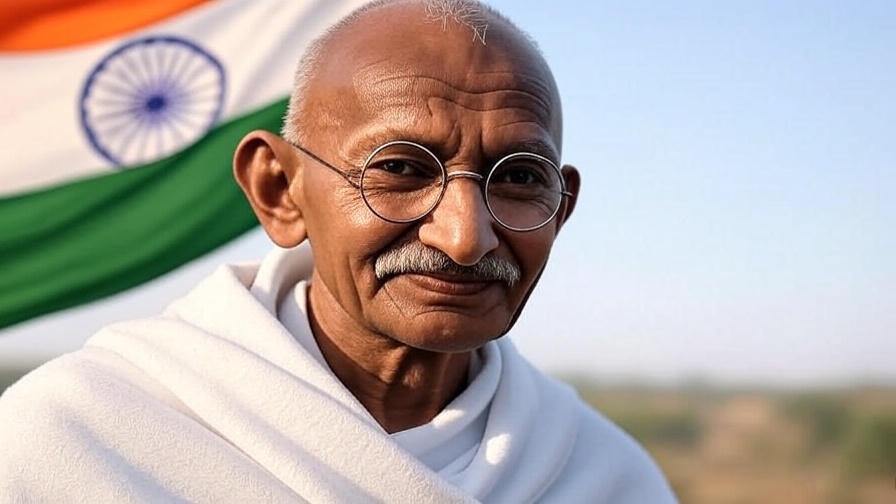Mahatma Gandhi, often called the “Father of the Nation” in India, was a global icon of peace and nonviolence. Born on October 2, 1869, in Porbandar, Gujarat, Gandhi’s life and teachings continue to inspire millions worldwide. His philosophy of ahimsa (nonviolence) and satyagraha (truth and resistance) played a pivotal role in India’s struggle for independence from British rule. Beyond politics, his legacy offers a timeless blueprint for resolving conflicts, fostering unity, and promoting personal growth. This 2000-word blog article explores Gandhi’s journey, his principles of nonviolence, their impact, and how they remain relevant today, written in a simple and organized manner for all audiences.
𝗪𝗵𝗼 𝗪𝗮𝘀 𝗠𝗮𝗵𝗮𝘁𝗺𝗮 𝗚𝗮𝗻𝗱𝗵𝗶?
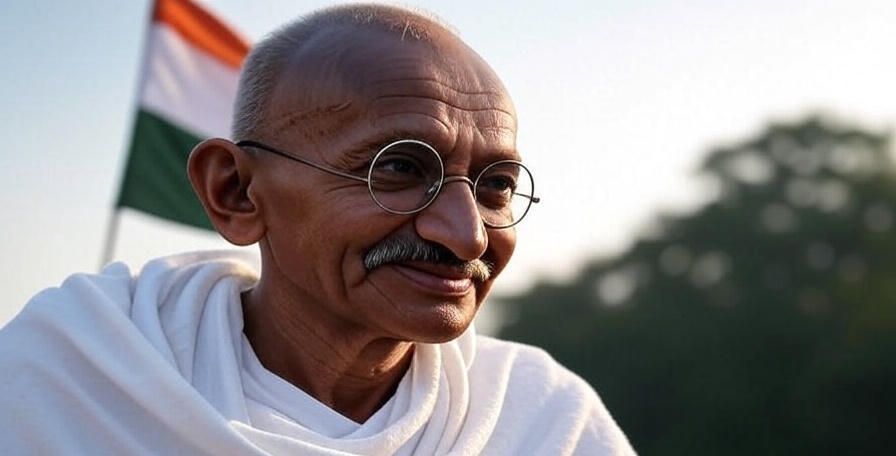
Mohandas Karamchand Gandhi, affectionately known as Bapu (father) or Mahatma (great soul), was a lawyer, political leader, and spiritual guide. He studied law in London and worked in South Africa before returning to India in 1915. There, he led the Indian National Congress and mobilized millions to fight for independence using nonviolent methods. Gandhi’s life was marked by simplicity—he wore a dhoti, lived modestly, and fasted often to promote peace and unity. Assassinated on January 30, 1948, his death did not end his influence; it amplified his message of love and resistance.
𝗧𝗵𝗲 𝗕𝗶𝗿𝘁𝗵 𝗼𝗳 𝗡𝗼𝗻𝘃𝗶𝗼𝗹𝗲𝗻𝗰𝗲
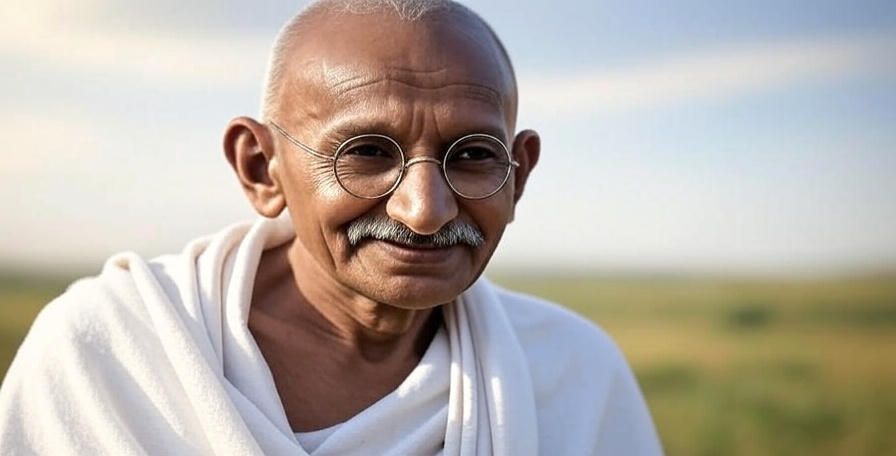
Gandhi’s philosophy of nonviolence was shaped by his experiences and beliefs. Growing up in a devout Hindu family, he was influenced by the principle of ahimsa, which forbids harm to any living being. His time in South Africa (1893–1914) was a turning point. Facing racial discrimination, he developed satyagraha, a method of nonviolent resistance to injustice. This approach combined truth (satya) with persistence (agraha), urging people to stand firm without resorting to violence.
In India, Gandhi applied these ideas during movements like the Non-Cooperation Movement (1920–22), the Salt March (1930), and the Quit India Movement (1942). These campaigns showcased how nonviolence could challenge powerful oppressors, earning global admiration.
𝗖𝗼𝗿𝗲 𝗣𝗿𝗶𝗻𝗰𝗶𝗽𝗹𝗲𝘀 𝗼𝗳 𝗚𝗮𝗻𝗱𝗵𝗶’𝘀 𝗡𝗼𝗻𝘃𝗶𝗼𝗹𝗲𝗻𝗰𝗲
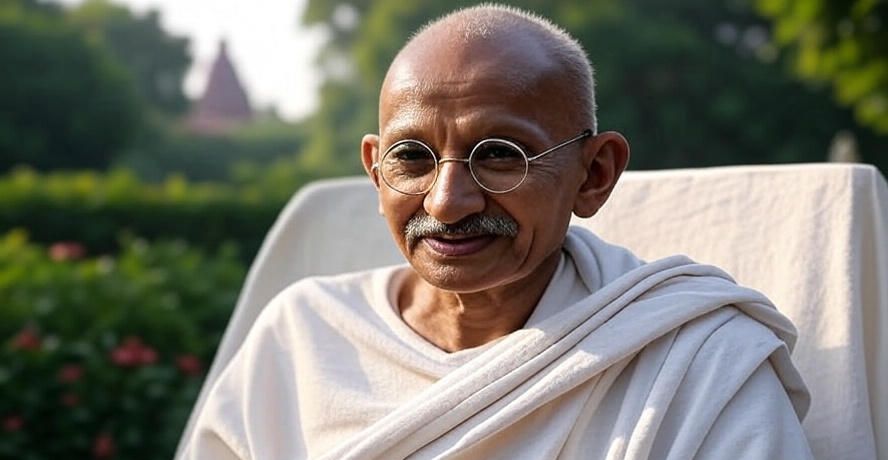
Gandhi’s approach to peace was built on several key principles, making it accessible and practical for everyone.
𝟭. 𝗔𝗵𝗶𝗺𝘀𝗮: 𝗡𝗼𝗻𝘃𝗶𝗼𝗹𝗲𝗻𝗰𝗲 𝗶𝗻 𝗧𝗵𝗼𝘂𝗴𝗵𝘁 𝗮𝗻𝗱 𝗔𝗰𝘁𝗶𝗼𝗻
• Ahimsa means avoiding harm not just physically but also through words and thoughts. Gandhi believed that violence breeds more violence, while nonviolence fosters understanding.
• Example: During the Salt March, he and his followers walked 240 miles to protest the British salt tax, using peaceful marches instead of weapons.
𝟮. 𝗦𝗮𝘁𝘆𝗮𝗴𝗿𝗮𝗵𝗮: 𝗧𝗵𝗲 𝗣𝗼𝘄𝗲𝗿 𝗼𝗳 𝗧𝗿𝘂𝘁𝗵
• Satyagraha encouraged people to resist injustice with courage and truth. It involved civil disobedience, like refusing to obey unjust laws, while maintaining respect for the opponent.
• Example: Gandhi’s refusal to pay taxes or use British goods during the Non-Cooperation Movement showed how truth could challenge authority.
𝟯. 𝗦𝗲𝗹𝗳-𝗦𝘂𝗳𝗳𝗲𝗿𝗶𝗻𝗴: 𝗦𝘁𝗿𝗲𝗻𝗴𝘁𝗵 𝗧𝗵𝗿𝗼𝘂𝗴𝗵 𝗦𝗮𝗰𝗿𝗶𝗳𝗶𝗰𝗲
• Gandhi believed that willingly accepting suffering for a cause could awaken the conscience of the oppressor. He often fasted to stop violence between Hindus and Muslims.
• Example: His 21-day fast in 1943 aimed to unite communities and promote peace
𝟰. 𝗘𝗾𝘂𝗮𝗹𝗶𝘁𝘆 𝗮𝗻𝗱 𝗨𝗻𝗶𝘁𝘆
• Gandhi fought for the rights of the oppressed, including the “untouchables” (whom he called Harijans, or “children of God”) and women. He saw unity as essential for peace.
• Example: He worked to end caste discrimination and encouraged women to join the freedom struggle.
𝗠𝗮𝗷𝗼𝗿 𝗠𝗼𝘃𝗲𝗺𝗲𝗻𝘁𝘀 𝗟𝗲𝗱 𝗯𝘆 𝗚𝗮𝗻𝗱𝗵𝗶
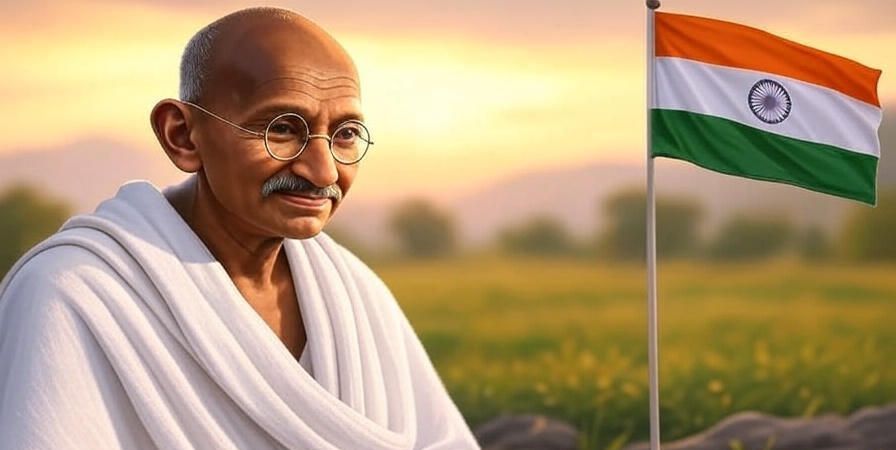
Gandhi’s nonviolent campaigns were turning points in India’s history. Here’s a look at some key movements:
𝟭. 𝗡𝗼𝗻-𝗖𝗼𝗼𝗽𝗲𝗿𝗮𝘁𝗶𝗼𝗻 𝗠𝗼𝘃𝗲𝗺𝗲𝗻𝘁 (𝟭𝟵𝟮𝟬–𝟮𝟮)
• Gandhi urged Indians to boycott British goods, schools, and courts. People burned foreign clothes and spun their own khadi (handwoven cloth).
• Outcome: It united millions and showed the power of collective nonviolent action, though it was suspended after violence broke out in Chauri Chaura.
𝟮. 𝗦𝗮𝗹𝘁 𝗠𝗮𝗿𝗰𝗵 (𝟭𝟵𝟯𝟬)
• To protest the British monopoly on salt, Gandhi led a 240-mile march to the Arabian Sea to make salt. Thousands joined, defying British laws.
• Outcome: The march gained international attention, weakening British control and inspiring global nonviolent movements.
𝟯. 𝗤𝘂𝗶𝘁 𝗜𝗻𝗱𝗶𝗮 𝗠𝗼𝘃𝗲𝗺𝗲𝗻𝘁 (𝟭𝟵𝟰𝟮)
• With the slogan “Do or Die,” Gandhi called for immediate British withdrawal. Despite arrests, the movement spread rapidly.
• Outcome: It pressured Britain to negotiate independence, achieved on August 15, 1947.
These movements demonstrated that nonviolence could be a powerful tool against oppression, relying on moral strength rather than physical force.
𝗚𝗹𝗼𝗯𝗮𝗹 𝗜𝗺𝗽𝗮𝗰𝘁 𝗼𝗳 𝗚𝗮𝗻𝗱𝗵𝗶’𝘀 𝗟𝗲𝗴𝗮𝗰𝘆
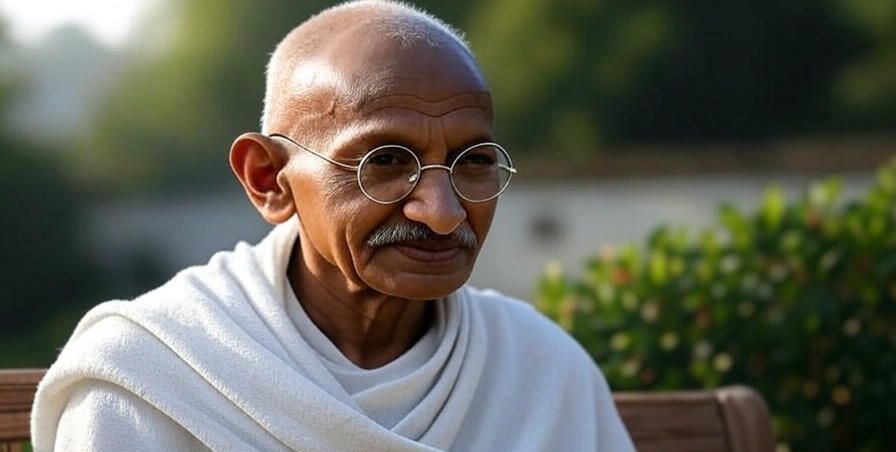
Gandhi’s ideas transcended India, influencing leaders and movements worldwide. Here are some examples:
• Martin Luther King Jr.: The American civil rights leader adopted Gandhi’s nonviolent resistance to fight racial segregation in the 1950s and 60s, leading to landmark laws like the Civil Rights Act of 1964.
• Nelson Mandela: South Africa’s anti-apartheid hero drew inspiration from Gandhi, using peaceful protests to end apartheid and become the country’s first Black president.
• Dalai Lama: The Tibetan spiritual leader advocates nonviolence in his struggle for Tibet’s autonomy, echoing Gandhi’s principles.
Gandhi’s influence also extends to modern movements, such as climate activism and human rights campaigns, where peaceful protests continue to drive change.
𝗥𝗲𝗹𝗲𝘃𝗮𝗻𝗰𝗲 𝗼𝗳 𝗡𝗼𝗻𝘃𝗶𝗼𝗹𝗲𝗻𝗰𝗲 𝗧𝗼𝗱𝗮𝘆
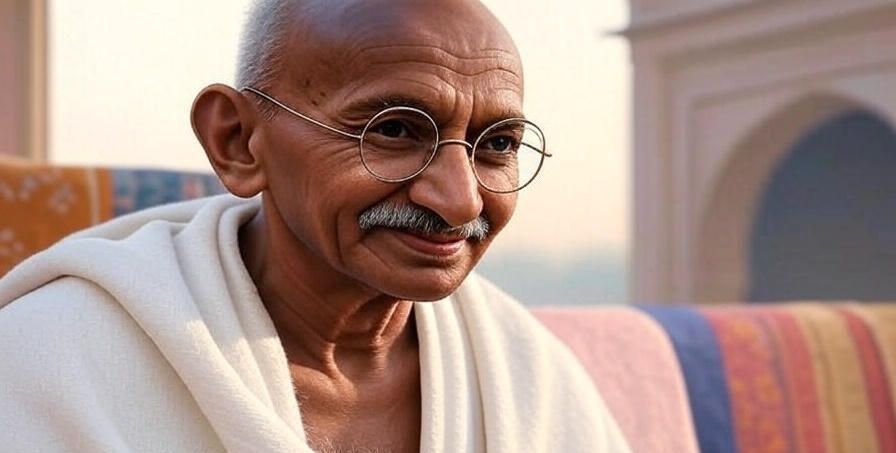
In a world facing conflicts, inequality, and environmental challenges, Gandhi’s legacy remains vital. Here’s how his teachings apply today:
𝟭. 𝗥𝗲𝘀𝗼𝗹𝘃𝗶𝗻𝗴 𝗖𝗼𝗻𝗳𝗹𝗶𝗰𝘁𝘀
• Nonviolence offers an alternative to war and aggression. For instance, peace talks and protests can address issues like territorial disputes or political unrest.
• Example: The 2011 Arab Spring saw peaceful demonstrations inspire change in several countries.
𝟮. 𝗣𝗿𝗼𝗺𝗼𝘁𝗶𝗻𝗴 𝗦𝗼𝗰𝗶𝗮𝗹 𝗝𝘂𝘀𝘁𝗶𝗰𝗲
• Gandhi’s fight against caste and gender discrimination resonates with today’s movements for equality, such as Black Lives Matter and #MeToo.
• Example: Peaceful marches have raised awareness about racial and gender injustices globally.
𝟯. 𝗘𝗻𝘃𝗶𝗿𝗼𝗻𝗺𝗲𝗻𝘁𝗮𝗹 𝗦𝘂𝘀𝘁𝗮𝗶𝗻𝗮𝗯𝗶𝗹𝗶𝘁𝘆
• Gandhi’s simple lifestyle and call for self-reliance align with efforts to reduce consumption and protect the planet.
• Example: The global push for sustainable living mirrors his advocacy for khadi and local production.
𝟰. 𝗣𝗲𝗿𝘀𝗼𝗻𝗮𝗹 𝗚𝗿𝗼𝘄𝘁𝗵
• Practicing nonviolence starts with self-discipline—controlling anger, forgiving others, and living with integrity. This can improve mental health and relationships.
• Example: Mindfulness practices today echo Gandhi’s emphasis on inner peace.
𝗖𝗵𝗮𝗹𝗹𝗲𝗻𝗴𝗲𝘀 𝘁𝗼 𝗡𝗼𝗻𝘃𝗶𝗼𝗹𝗲𝗻𝗰𝗲
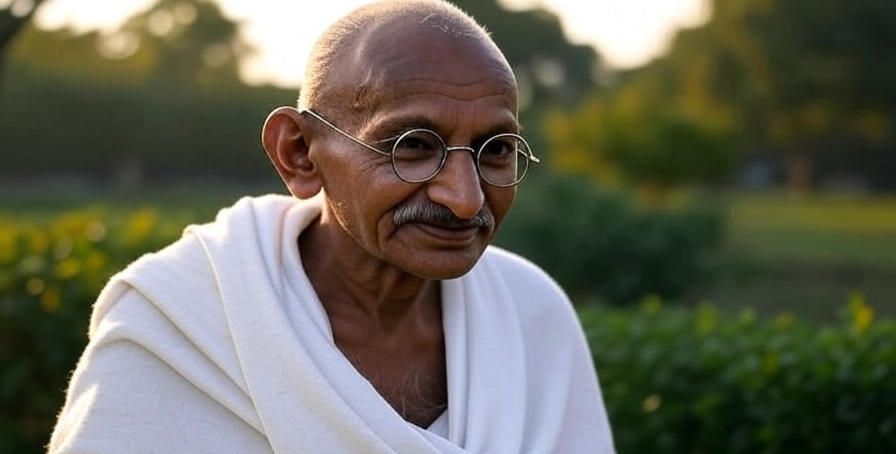
While powerful, nonviolence faces challenges. Critics argue it may not work against extreme violence or dictatorships. Gandhi acknowledged this, suggesting that nonviolence requires immense courage and mass participation. Success depends on the oppressor’s willingness to listen and the movement’s discipline. Despite setbacks, history shows that nonviolent movements often outlast violent ones, as they build lasting change through moral authority.
𝗛𝗼𝘄 𝘁𝗼 𝗘𝗺𝗯𝗿𝗮𝗰𝗲 𝗚𝗮𝗻𝗱𝗵𝗶’𝘀 𝗧𝗲𝗮𝗰𝗵𝗶𝗻𝗴𝘀
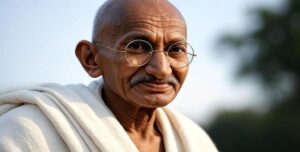
You don’t need to lead a revolution to follow Gandhi’s path. Here are simple ways to incorporate his principles:
• Practice Kindness: Avoid harsh words or actions, even in disagreements. A kind response can de-escalate tension.Act with Integrity: Stand up for what’s right, even if it’s unpopular, but do so respectfully.Simplify Your Life: Reduce waste and support local products, reflecting Gandhi’s self-reliance.Meditate or Reflect: Spend a few minutes daily on self-awareness, fostering inner peace.Join Peace Efforts: Participate in community service or peaceful advocacy for causes you care about.
𝗚𝗮𝗻𝗱𝗵𝗶’𝘀 𝗟𝗮𝘀𝘁𝗶𝗻𝗴 𝗜𝗻𝘀𝗽𝗶𝗿𝗮𝘁𝗶𝗼𝗻
Gandhi’s life ended tragically, but his message endures. His famous quote, “An eye for an eye makes the whole world blind,” encapsulates his belief that violence only perpetuates suffering. Celebrated annually on October 2 as the International Day of Non-Violence by the United Nations, his birthday honors his global impact. Museums, like the Gandhi Smriti in Delhi, and films, such as Gandhi (1982), keep his story alive.
Today, Gandhi’s legacy is a call to action. Whether it’s addressing climate change, fighting inequality, or healing personal conflicts, nonviolence offers a path forward. His life proves that peace is not weakness but a profound strength that can transform individuals and societies.
𝗖𝗼𝗻𝗰𝗹𝘂𝘀𝗶𝗼𝗻
Mahatma Gandhi’s legacy of nonviolence is a gift to humanity. Through ahimsa and satyagraha, he showed that peace can overcome power, uniting people across divides. From India’s independence to global civil rights, his methods have shaped history. In 2025, as we face new challenges, Gandhi’s teachings remind us to act with courage, compassion, and truth. By embracing his principles, we can build a world where peace prevails, honoring the man who turned nonviolence into a global force for good

